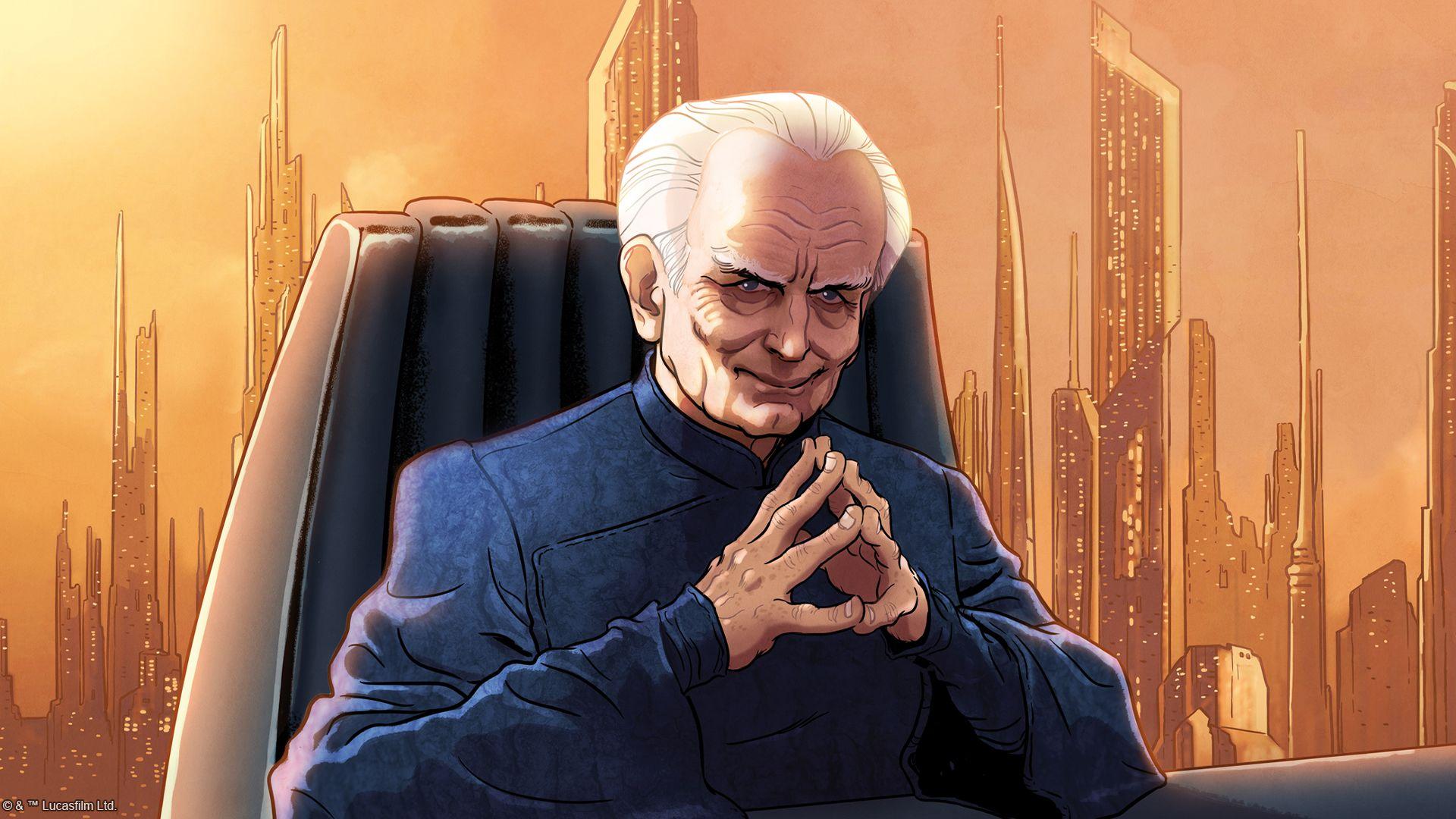Taking On Trilogy
September 24, 2025 | Written by Tyler Fultz
Back in June, Fantasy Flight Games debuted the Trilogy format for the Star Wars™: Unlimited trading card game. If you haven't had the chance to try this new format yet, this article is for you. Trilogy is a lot of fun and a great complement to both competitive Premier play and casual limited play!
Deckbuilding is one of the most fun aspects of a trading card game like Star Wars: Unlimited, and sometimes you build multiple awesome decks that you want to try out all at once. Trilogy lets you do that!
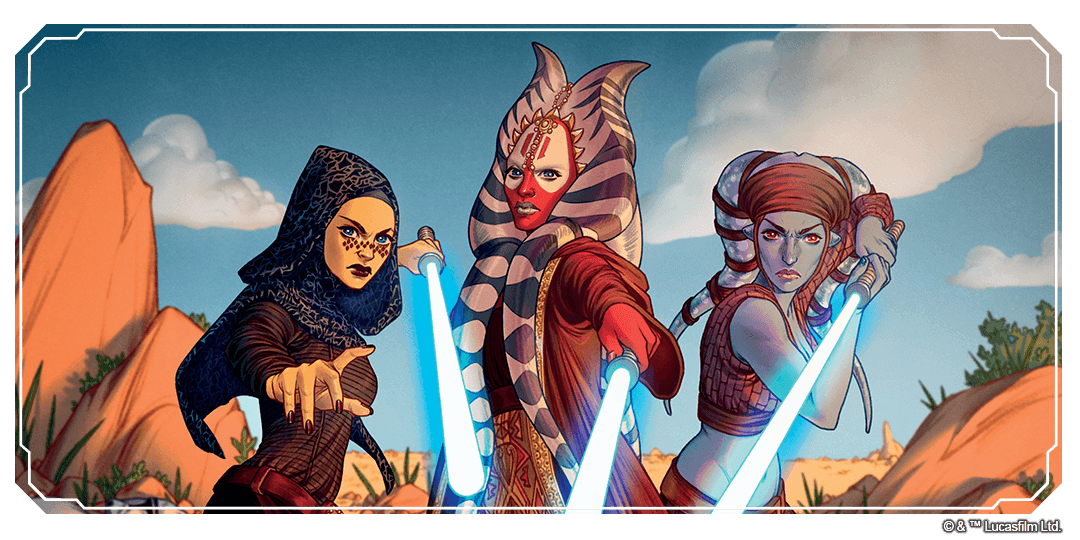
The Format
Just to review the basics: Trilogy format requires you to build three different decks. And while these decks have the same general structure as the Premier format, the “rule of three” that limits you to three cards in a deck applies across all three decks. Trilogy format also has a “ban phase,” where each player presents their three leader-base pairings to their opponent, and then both players secretly choose one of those decks to ban from the match. After that, each player secretly chooses one of their two remaining decks to begin the match with.
Whenever a game in the Trilogy format is finished, the winning deck for that game is set aside and can no longer be used for that match. Since this is a best-of-three format, this means that you will need to win with both of your unbanned decks to win the match. If you lose the first game, you can choose which of your two available decks to use for the second game, but once you've won a game, you'll have to use the other deck until you win again. One other change from the Premier format: there are NO sideboards in Trilogy format. You don't have the 10 additional cards to swap in and out of your deck between each game. You'll have to choose between stocking those tools in your main deck, or not including them at all.
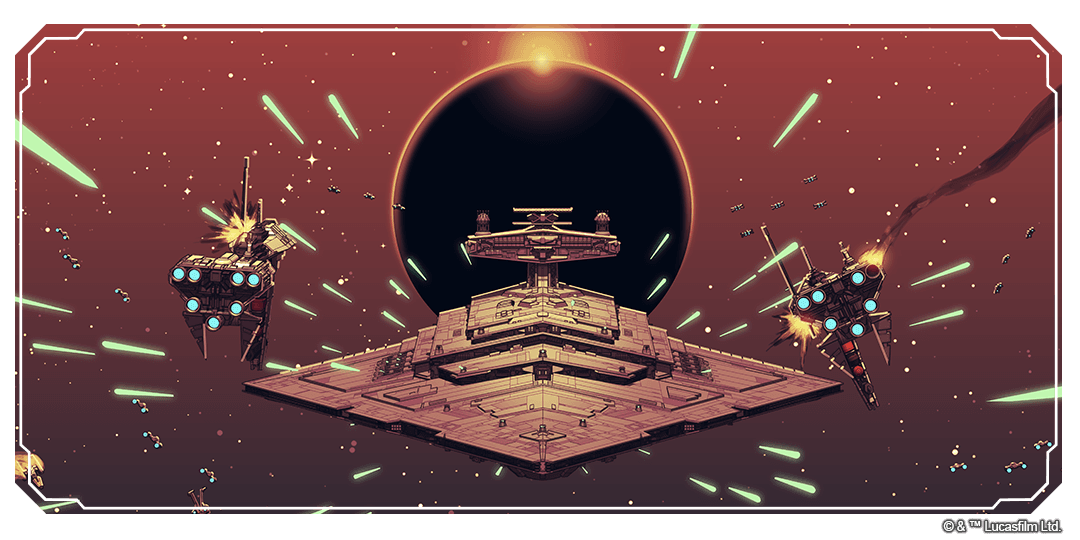
Why Trilogy?
First, I NEVER have to play my least favorite matchup. The ban phase allows me to pretend my personal archnemesis, Sabine Wren (Spark of Rebellion, 14), simply doesn't exist. Tired of having a swarm of Rebels drop 15 damage on your base by the third turn of the game? Trilogy is for you! Same can be said if you're tired of Overwhelming Barrage (Spark of Rebellion, 92) wiping out your units, or of opponents endlessly hitting you with Force Throw (Spark of Rebellion, 167). The ban phase gives players a personal “I'd rather not” button that we can all use to enhance our play experience.
Second, you never have to play the same matchup twice. Everyone has started a match and realized soon into the first game that your opponent has all the answers to your strategy. It's just what happens sometimes in a Premier match; you get an opponent you're unfavored into. However, in Trilogy, you can immediately do what you naturally want to do in that situation: switch decks and find more favorable ground. As a player, this gives you more control over your match outcomes. It won't simply be telling your friends, “I got the bad matchup” at the end of round. You'll be able to tell richer stories about the triple threat you faced—and hopefully overcame!
Third, you don't have to create and track a separate sideboard. By leaving out sideboards, Trilogy makes starting your next game faster and leaves your deck boxes cleaner. It also rewards players for stocking utility cards in their decks. In Premier, you might move the copies of Confiscate (Spark of Rebellion, 251) you're using into your sideboard, since not every opponent will have upgrades to defeat. But in Trilogy, there's interesting deckbuilding choices to be made around stocking those silver bullet answers for your opponent's strategies. How much consistency in your deck are you willing to forego to have the answer you need? Trilogy invites you to ponder that question! It also restricts your opponent from stocking those same answers easily in their sideboard, which could lead to a more competitive match without the aforementioned “silver bullets.” Furthermore, niche strategies like Darth Vader (Jump to Lightspeed, 6)—that could otherwise be sideboarded against—will be more competitive in Trilogy!
Fourth, if you're like me, you just LOVE building decks. There are players who enjoy honing a single deck to perfection over the course of a competitive season, but I've never been very good at focusing myself like that. I always build lots of decks, and I wish I could bring them all to Premier tournaments. Trilogy will give you an outlet for all that creative energy and reward you for building decks with niche cards not everyone is using.
Fifth and finally, Trilogy challenges players to flex their piloting muscles with multiple kinds of decks. Unlike Premier, where a player can dig into a single deck, Trilogy requires players to successfully pilot two—maybe even three—decks to get to a victory!
This unique format invites skill expression around all elements of deckbuilding and match play!
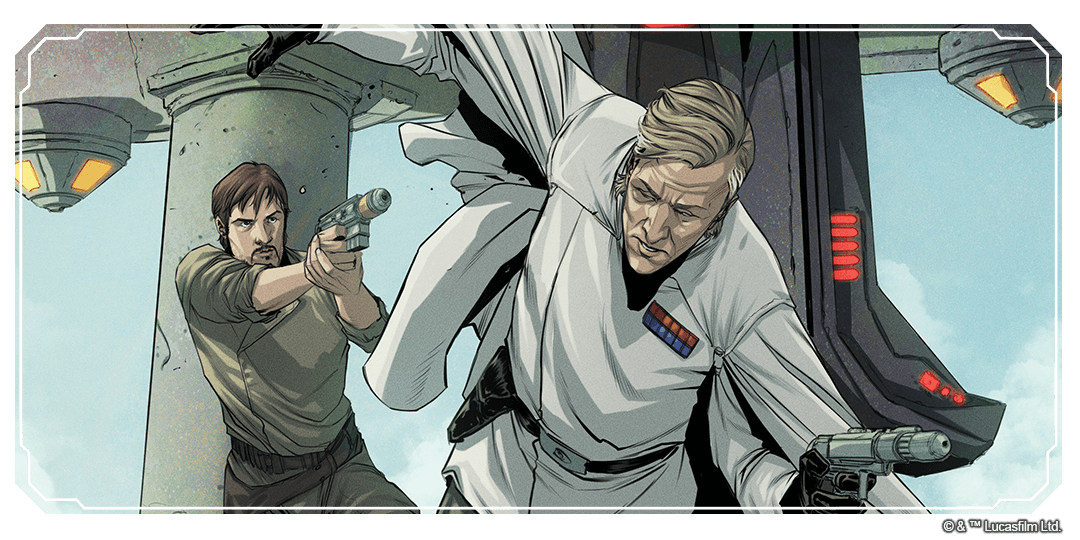
How to Build for Trilogy
The most basic approach to building for Trilogy is to deconflict the decks you're playing from an aspect standpoint. If you want to build your decks with as many great cards as possible, ensure that your three leader/base pairings pull from all six of the game's aspects (Heroism, Villainy, Aggression, Command, Cunning, and Vigilance.) If you do want to double up on a particular aspect, you'll need to ensure that the additional deck includes lots of unique cards that other decks wouldn't normally run. My personal recommendation in this department is to look at the leaders from Jump to Lightspeed. Their unique focus on vehicles, pilots and the space arena overlaps less with other leaders than the average set.
Beyond that, it can help your deckbuilding to spread your decks among different deck archetypes. Aggressive decks often use similar tools for burning down an opponent's base health, such as Surprise Strike (Spark of Rebellion, 220), while control decks often use similar tools for keeping the board clear, such as Power of the Dark Side (Spark of Rebellion, 41). If you build across the aggressive, midrange, and control deck styles, you won't have to reach into the same deckbuilding cupboard multiple times.
Finally, a more advanced strategy would be to center each of your decks around a power combo. Perhaps one deck derives its strength from Darth Vader (Legends of the Force, 37) paired with Energy Conversion Lab (Spark of Rebellion, 22); another focuses on Jedi Consular (Legends of the Force, 94) and Avar Kriss (Legends of the Force, 7); and your third leverages Kazuda Xiono (Jump to Lightspeed, 18) and Trench Run (Jump to Lightspeed, 156). Each of these combos gives your deck a potent centerpiece that can drive you to victory no matter which one you end up playing.
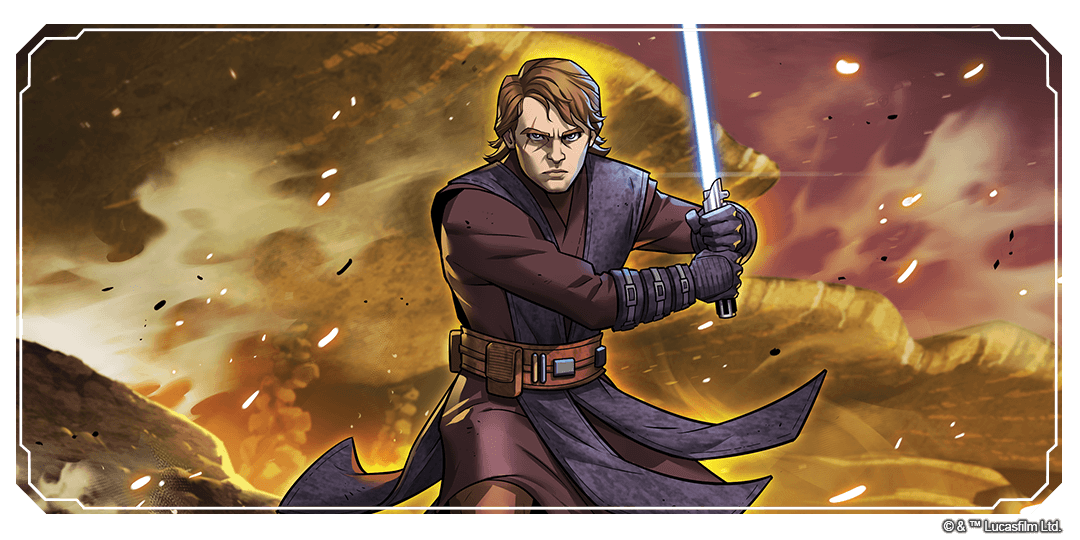
Let's Do This
Here are three budget-friendly Trilogy decks that you could take to a local event. None of them require any Legendary cards!
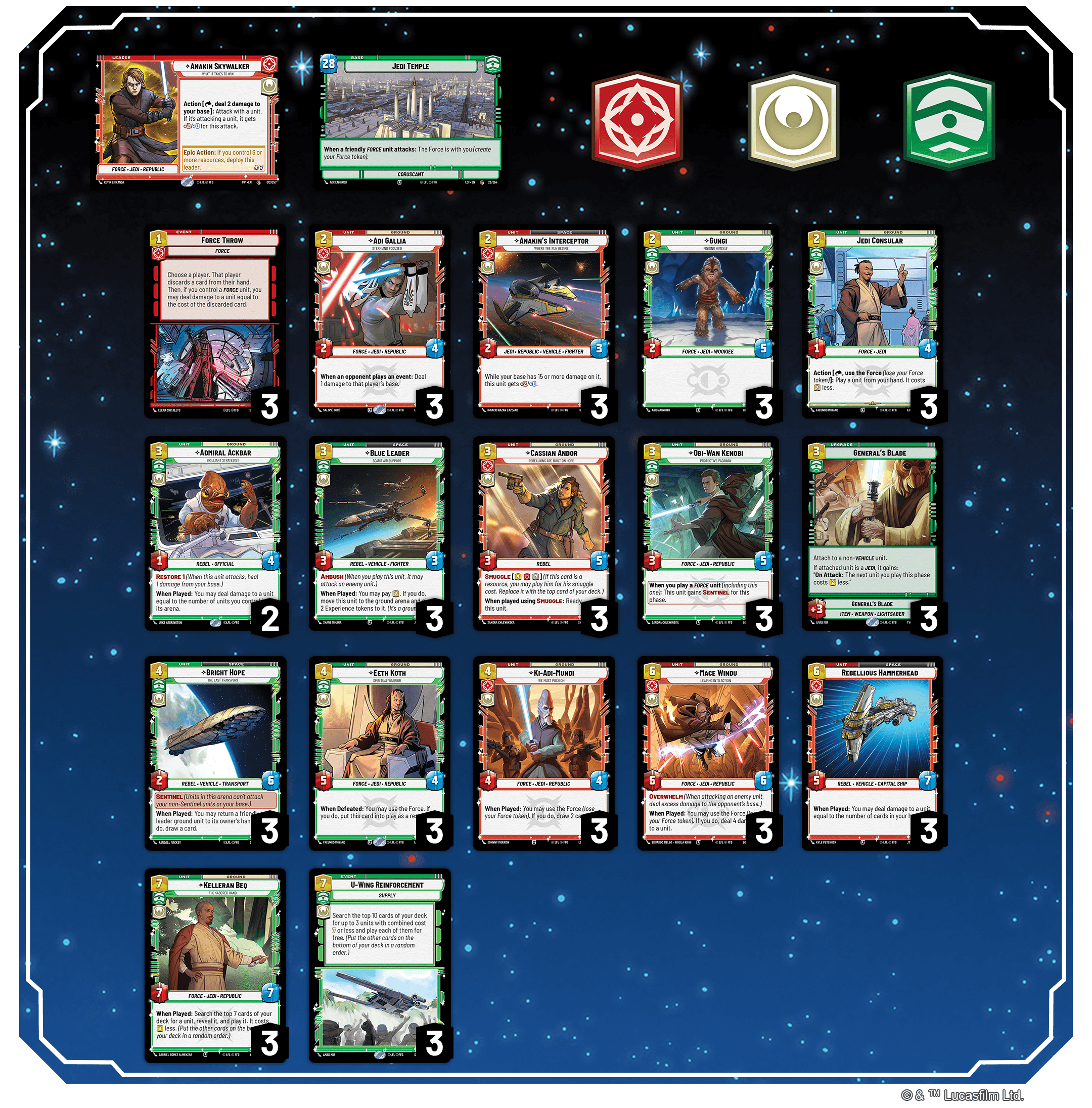
This Anakin Skywalker (Twilight of the Republic, 12) deck is a high-end deck that can control the early game through Anakin's ability and then overwhelm your opponent in the late game with a series of highly efficient cards like Kelleran Beq (Legends of the Force, 100), and U-Wing Reinforcement (Spark of Rebellion, 104).
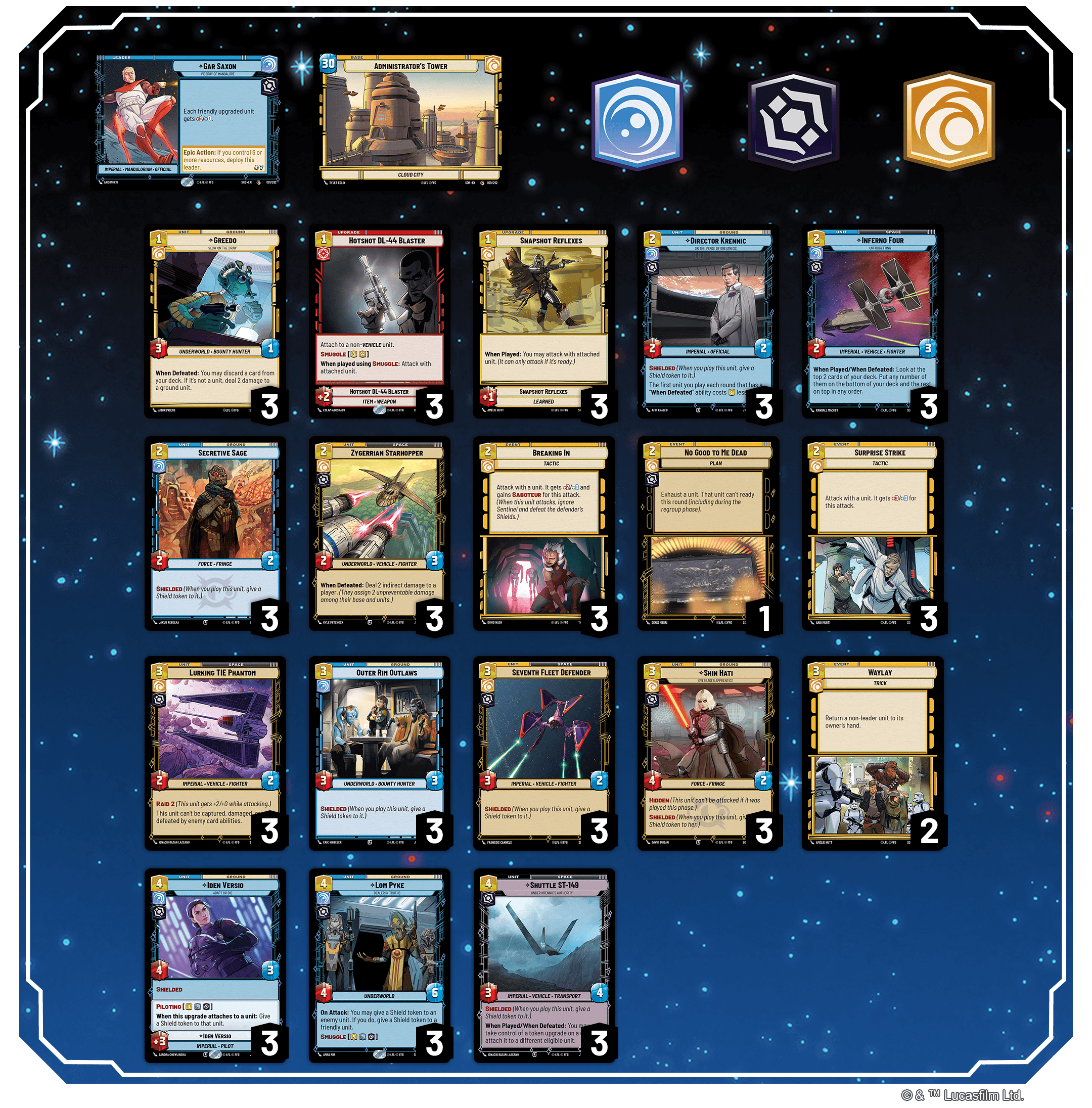
This Gar Saxon (Shadows of the Galaxy, 1) deck is an aggressive deck that presents hard-to-remove threats like Lurking TIE Phantom (Shadows of the Galaxy, 187) and Shuttle ST-149 (Jump to Lightspeed, 242) for your opponent to deal with while you relentlessly attack their base.
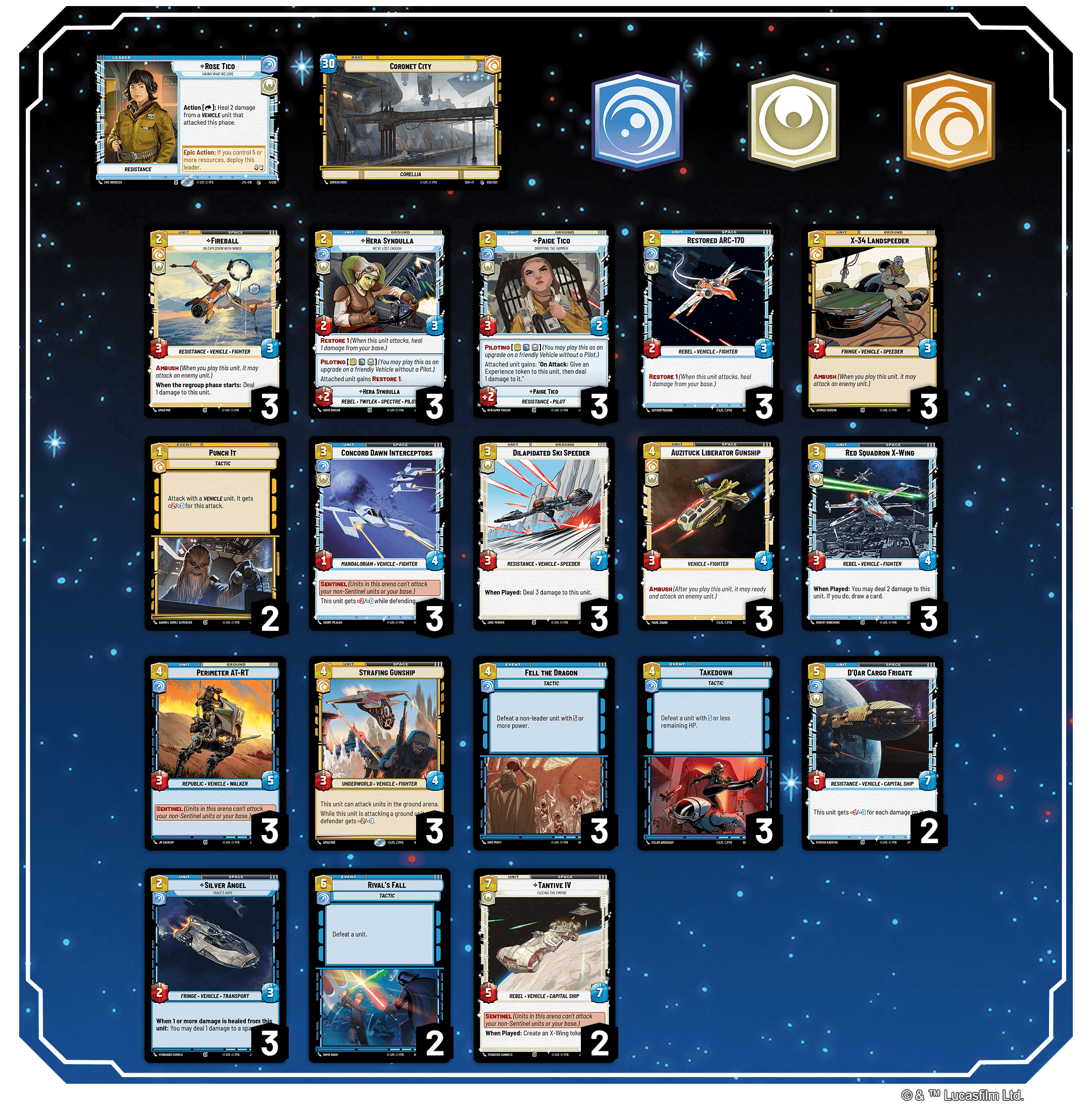
This Rose Tico (Jump to Lightspeed, 4) deck is a midrange deck focused on ambushing your opponent's units and then healing them with Rose's ability to win the board in the midgame.
Each of these decks brings not only a different color palette, but a different gameplay strategy to your Trilogy match!
Speaking of your Trilogy match, how best can you employ these decks? Well, the answer lies in the rock-paper-scissors dynamic in trading card games like Star Wars: Unlimited. Typically, an aggressive deck, like our Gar Saxon deck above, will be favored into control decks (that take longer to setup and “stabilize”) while being unfavored into midrange decks. Meanwhile, a deck with late game tools, like our Anakin Skywalker deck, can do well into decks focused on the midgame. The trick with Trilogy format is to combine your deck ban and deck choice to get those favored matchups. For instance, if you see that your opponent only has one aggressive deck and you think they'll ban your best midrange option, consider banning that aggressive deck!
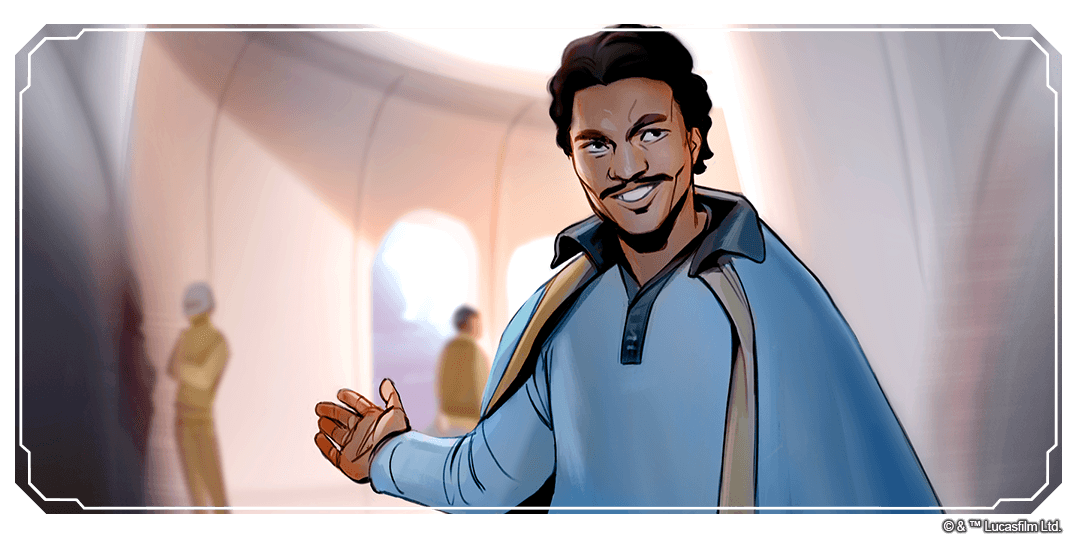
Spice Up Your Gaming Life
Finally, there's lots of room to take Trilogy and make it your own flavorful event at your local game night! You could lean into the movies for inspiration and ask each player to bring a leader from each of the prequel trilogy, the original trilogy, and the sequel trilogy. You could entice players to delve even further into the card pool and specify that all leaders must have the same aspects, or the same traits. Thematic, right? How about a Han Solo/Chewbacca/Lando Calrissian trio? Or Darth Vader/Emperor Palpatine/Admiral Piett?
Whatever option my group chooses next, I know we're going to have a good time. This is a game of endless possibilities, and the Trilogy format gives us lots of options to explore them!
Share This Post



